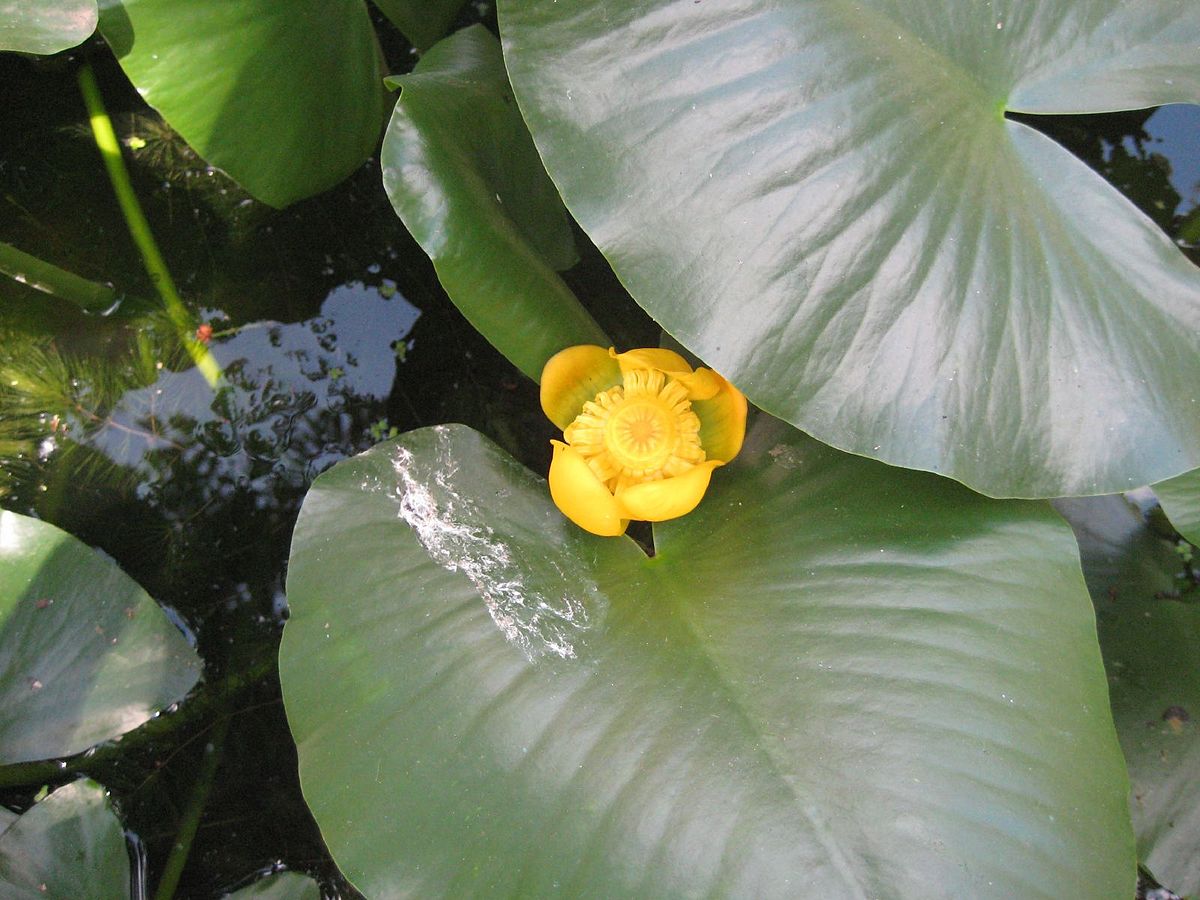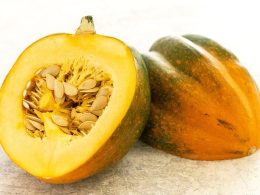The Spatterdock or Nuphar advenaplant, also called Pond Lily and Water Lily, is an aquatic plant with leaves of up to 60 centimeters (24 inches) in length with a triangular notch sitting at the base.
The plant has glossy green leaves with shapes that vary, which float on the surface of the water. However, these leaves are typically oval with a notch on one end toward the stem of the leaf.
The plant has yellow or orangish flowers that are 2.5 centimeters (1 inch) across, and are held above the surface of the water, and then develop into green fruits or bottle shape. Each of the fruits contains numerous seeds that will be dispersed by the water currents.
When the fruits become ripe, they turn green.
- Kingdom: Plantae
- Clade: Tracheophytes
- Clade: Angiosperms
- Order: Nymphaeales
- Family: Nymphaeaceae
- Genus: Nuphar
- Section: Nuphar sect. Astylus
- Species: N. advena
- Binomial name: Nuphar advena
Where to Find: These aquatic plants are known to grow throughout most parts of North America. These plants are found in quiet, shallow freshwater never deeper than 6 feet (1.8 meters) including lakes, ponds, and slow-moving rivers.
- Plant Range: Alaska southwards to California, the Rocky Mountains
- Climate range: Low to middle elevations in regions that are moist and temperate
- Local Occurrence: these plants are locally abundant in slow and shallow water
- Habitat Preferences: Shallow lakes and ponds, extremely slow-moving streams
Plant Strategy: These plants are aquatic perennial with thick, huge, “prehistoric-looking” rhizome. Like other water lilies and plants like this, the leaves and flowers of this plant float on the surface. The Rhizome of this plant is medicinal, and the seeds were a food staple of many native groups in the past.
Associated Species: Cattail (Typha spp.), Scirpus spp., Wild Iris (Iris spp.), Carex spp.
Collection: May Be Collected As Rhizomes, Seeds
Collection Guidelines: Collect the seeds of this plant in the late summer to early fall, and collect rhizomes in spring. It is easy to collect seeds from a canoe, but obtaining rhizomes may require that you dive underwater to get them from the substrate successfully.
Seed Germination of this plant: Stratify in cold water for 2-6 months
Seed Life: lasts up to 18 months if stored properly.
Seed Storage: Seeds can be stored in cold water, dried or stored in room temperature water, which will result in unsuccessful germination or minimal.
Propagation: Reproduction of this plant occurs both by rhizomes and seed. Roots of this aquatic plant can be divided in spring when the leaves first show up and transplanted to deep wet beds of preferably 2 ft. of water at least, or to site directly.
Soil/Medium Requirements: Mud or sand with some organic material
Installation Form: Young plant with submersed leaves from a pot of one gallon; or the cheaper alternative – 8 to 12″ in length of the rhizome.
Planting Density: Must be put 5 ft, apart in not less than 2 feet of water.
Care Requirements After Installation: No care required
Lifespan/Growth Rate: The plant grows very fast and spreads rapidly, providing food and shelter for fish and wildlife.
Edible Parts: Unlike other aquatic plants, all parts of the plant can be eaten. The fruits contain many dark brown seeds that you can roast or dry and then grind into flour. In certain species of this plant, the seeds are known to pop like popcorn.
The large rootstock of the plant contains starch. Once you dig it out of the mud, simply peel off the outside, and chop or boil the flesh whole. Sometimes the rootstock is found to contains large amounts of a very bitter compound.
If you cook the plant in several changes of water, it may remove the bitterness.
Other Uses: This plant is also medicinal as the roots can be chopped and boiled in clean water to make a mouthwash for mouth injuries and sore throats. Root and Leaf stocks can be used for the treatment of swellings and skin ailments.
We hope that you found this article helpful. Kindly leave a comment below.









